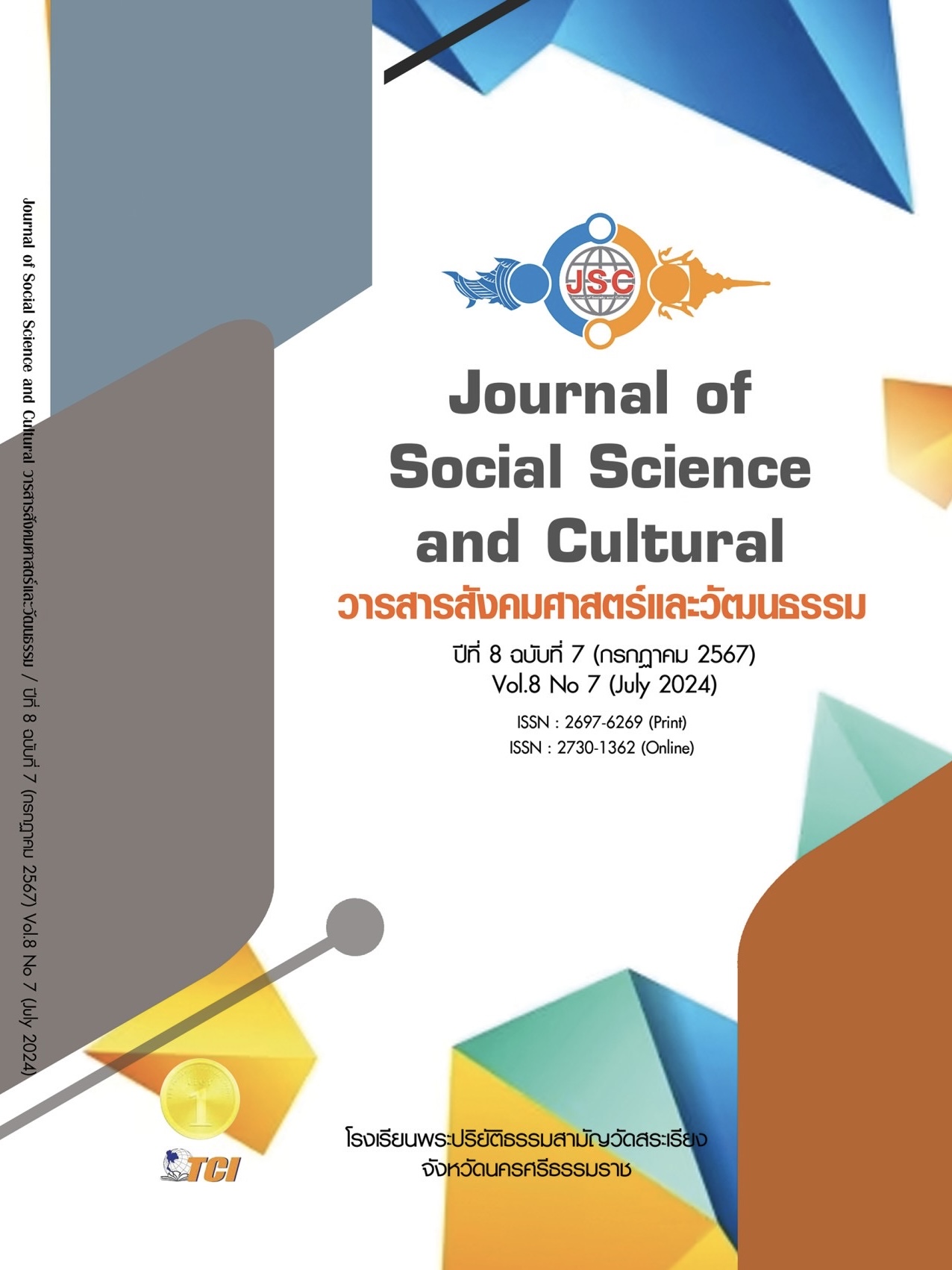IMPROVING THE AUTOMATIC LUBRICATION SYSTEM AND ANALYZING THE ECONOMIC COMPARISON BETWEEN THE AUTOMATIC OIL LUBRICATION SYSTEM AND THE AUTOMATIC GREASE LUBRICATION SYSTEM IN CNC MILLING MACHINE FOR ALUMINUM PARTS MANUFACTURER
Main Article Content
Abstract
The objective of this paper was to 1) Improve Automatic Lubrication Systems, and
2) Analyze the economic viability of Automatic Lubrication Systems, specifically the Brother TC S2D CNC model, located in an aluminum parts manufacturer at Amata Nakorn Industrial Estate, Chonburi Province. Studied the current issues related to the automatic lubricating oil system in the CNC milling machines within the factory premises. Investigated the details of the existing automatic lubricating oil system. The upgrade from the old automatic oil lubrication system to an automatic grease lubrication system to protected and extended the life of the coolant system. The study involved analyzing the root causes of issues using the 5M method (Man, Measurement, Machine, Method and Material). Engineering Economic Analysis was employed to calculate the payback period and internal rate of return (IRR). The study concluded that the automatic oil lubrication system incurred an annual maintenance cost of 58,626 Baht. After implementing the upgrade to an automatic grease lubrication system with an installation cost of 55,000 Baht and a lifespan of 10 years, the maintenance cost was reduced to 33,252 Baht per year. The internal rate of return (IRR) for this improvement was 60.41%, and the payback period was 1.64 years.
Article Details
References
กษิรัช สนธิเปล่งศรี. (2555). การปรับปรุงประสิทธิภาพการบำรุงรักษาเครื่องฆ่าเชื้อ กรณีศึกษาบริษัทฟรี สแลนด์คัมพิน่า. ปทุมธานี: วิทยาลัยมหาวิทยาลัยเทคโนโลยีราชมงคลธัญบุรี.
กัณฑ์เอนก บุญอินทร์. (2565). การวิเคราะห์เปรียบเทียบเชิงเทคนิคและเศรษฐศาสตร์ระหว่างระบบหล่อลื่นจาระบี อัตโนมัติ กับระบบหล่อลื่นน้ำมันอัตโนมัติ: กรณีศึกษาในเครื่องกัด CNC สำหรับโรงงานผลิตชิ้นส่วนยานยนต์. กรุงเทพมหานคร: วิศวกรรมศาสตรมหาบัณฑิต มหาวิทยาลัยสยาม.
ชาติชาย อัศดรศักดิ์ และพัชราภรณ์ เนียมมณี. (2550). เศรษฐศาสตร์วิศวกรรม. กรุงเทพมหานคร: ศูนย์ผลิตตำราเรียน มหาวิทยาลัยเทคโนโลยีพระจอมเกล้าพระนครเหนือ.
ธนาคารกรุงไทย. (2566). โครงสร้างอุตสาหกรรมชิ้นส่วนยานยนต์ไทย ส่องทิศทางอุตสาหกรรมชิ้นส่วนยานยนต์ไทยปี 2566-2567. เรียกใช้เมื่อ 21 พฤษภาคม 2567 จาก https://krungthai.com/Download/economyresources/EconomyResourcesDownload_1918
วันชัย ริจิรวนิช. (2547). เศรษฐศาสตร์วิศวกรรม. กรุงเทพมหานคร: โรงพิมพ์จุฬาลงกรณ์มหาวิทยาลัย.
วิจัยกรุงศรี อุตสาหกรรม. (2566). แนวโน้มธุรกิจ/อุตสาหกรรมปี 2566-2568 อุตสาหกรรมชิ้นส่วนยานยนต์. เรียกใช้เมื่อ 25 พฤษภาคม 2567 จาก https://www.krungsri.com/th/research/industry/industry-outlook/hi-tech-industries/auto-parts/io/auto-parts-2023-2025
สุพร อัสวินนิมิต และธีรพร พัดภู่. (2548). วิศวกรรมบำรุงรักษา (Maintenance Engineering). กรุงเทพมหานคร: สำนักพิมพ์จุฬาลงกรณ์มหาวิทยาลัย.
สุรพล ราษฎร์นุ้ย. (2550). ฐานข้อมูลสภาพสารหล่อลื่นของเครื่องจักรกลหนักในประเทศไทยเพื่อการวินิจฉัยสาเหตุขัดข้องโดยการประยุกต์ใช้ระบบผู้เชี่ยวชาญ. กรุงเทพมหานคร: มหาวิทยาลัยเทคโนโลยีพระจอมเกล้าพระนครเหนือ.
IKKI Thailand. (2566). ทฤษฎี 5M. เรียกใช้เมื่อ 7 มิถุนายน 2567 จาก https://ikki-group.com/5m-model/
Industry-Media. (2566). โครงสร้างผลิตชิ้นส่วนยานยนต์ sme. เรียกใช้เมื่อ 7 มิถุนายน 2567 จาก https://images.search.yahoo.com/search/images


